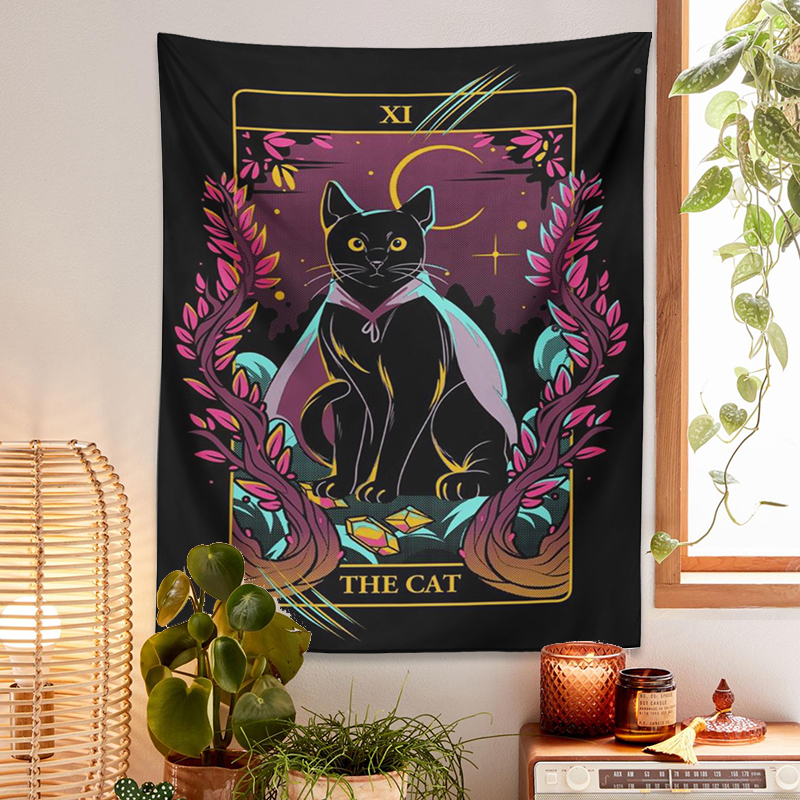Tapestry
A Blend of Art, History, and Decor
Tapestry, the ancient art form that has adorned the walls of castles, homes, and museums for centuries, continues to captivate and charm decor enthusiasts around the world. This comprehensive blog post explores the rich history of tapestries, their various styles and uses, and how they can transform modern living spaces. Dive into the intricate world of tapestry and discover how this timeless art form can enrich your home decor.
The Historical Significance of Tapestry
Tapestry is a form of textile art traditionally woven by hand on a loom. It is known for its complexity and decorative style, often used for wall hangings, furniture covers, and ceremonial purposes. The origins of tapestry can be traced back to ancient civilizations like the Egyptians and the Greeks, but it was during the Middle Ages in Europe that it truly flourished.
During the medieval period, tapestries served not only as artistic expressions but also as practical solutions for insulation in large stone castles. They depicted scenes from everyday life, mythology, and the Bible, providing insight into the cultural and spiritual lives of the people during that era. Renaissance tapestries are particularly noted for their beauty and intricacy, commissioned by the wealthy to display their status and artistic taste.
Techniques and Materials
The art of tapestry weaving has evolved over the centuries, but the basic techniques have remained largely the same. Traditional tapestries are made by weaving colored weft threads through fixed warp threads to build up a complete design. The process can be incredibly time-consuming and requires a great deal of skill, making each piece unique and valuable.
Wool has traditionally been the most common material for the warp because of its strength and durability, while silk, cotton, and gold or silver threads are often used for the weft to add color and detail to the intricate designs. Contemporary tapestries may incorporate synthetic fibers, which allow for greater versatility and durability.
Modern Tapestry in Home Decor
Today, tapestries are celebrated for their artistic and practical uses in home decor. They can be used to add color, texture, and personality to any space. Here’s how tapestries can enhance different areas of a home:
- Living Rooms: A large tapestry can serve as the focal point of a living room, setting the tone for the entire space. It can also help with acoustics by softening sound in rooms with hard floors and minimal soft furnishings.
- Bedrooms: A tapestry hung behind a bed can act as a striking headboard alternative, adding warmth and texture to the sleeping area.
- Workspaces: In home offices, tapestries can provide a backdrop that adds a touch of personality without overwhelming the space. They can also be used to delineate zones in an open-plan area.
Styling with Tapestries
When incorporating tapestries into your home, consider the following tips:
- Color Coordination: Choose a tapestry with colors that complement your existing decor to create a cohesive look.
- Mixing Styles: Tapestries can work well with various decor styles, from bohemian to traditional. Pairing a modern tapestry with vintage furniture, for instance, can create an eclectic, layered aesthetic.
- Placement: Hang tapestries at eye level in central locations to draw attention. In larger rooms, they can be hung on expansive walls to break up the space visually.
Caring for Your Tapestry
Proper care is essential to maintaining the beauty and longevity of tapestries:
- Avoid Direct Sunlight: Keep tapestries out of direct sunlight to prevent fading.
- Cleaning: Dust tapestries regularly with a soft brush attachment and consider professional cleaning for deep stains.
- Storage: If you need to store your tapestry, roll it rather than folding to avoid creases, and wrap it in clean, non-acidic materials.
Conclusion
Tapestries offer a unique blend of art, history, and functionality. Whether used as a statement piece or a subtle addition to your decor, they can significantly impact the aesthetic and atmosphere of your home. Embracing tapestries in your decorating endeavors not only enhances your environment but also connects you to a rich tradition of textile art. As we continue to appreciate and integrate ancient crafts into modern life, tapestries stand out as both beautiful decor items and historical artifacts, bringing depth and texture to our contemporary spaces.



